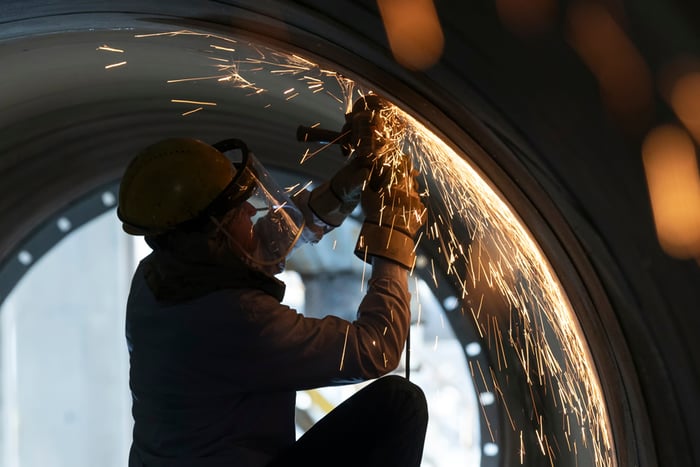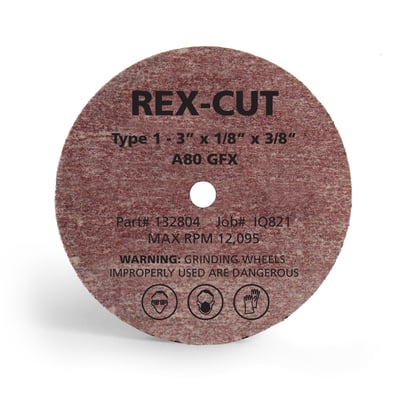Technological advancements across the manufacturing sector have made everything from robotic welding arms to custom additive manufacturing part of the mainstream vocabulary. Specialized shops across the industry, such as pipe, marine, and aircraft component manufacturers, are faced with the daunting choice of investing millions into the time-saving promises of the newest welding solutions or saving cash by taking the slower, familiar path. Sound familiar?
Luckily, technology has also brought significant advancements to the most overlooked and undervalued space in production: consumables.
Abrasive tooling is a critical player in your shop’s workflow and is often the missing puzzle piece for saving time and money. Harness the power of modern abrasives by selecting the right abrasive grain and bond combination to match metal and stock removal needs. Deburring and grinding with a properly selected grain will have an immeasurable impact on lowering costs and speeding up productive work.

Let One Disc Do More Work
Some of the new alloys in production pose challenges for even the most experienced shops. High-strength and wear-resistant metals like chrome-molybdenum and Inconel have a hardness that quickly wears down stock abrasives. When you need to tackle cutting, machining, and finishing a CroMoly part, it’s often necessary to run back and forth from the tool chest for a new abrasive after each step in production. Instead, compare and select from a list of abrasive grains:
- Aluminum Oxide: the workhorse of the abrasive world.
- Black Silicon Carbide: a common abrasive typically used on hard or brittle material such as titanium.
- Alumina Zirconia: a tough self-sharpening abrasive with very small crystals.
- Ceramic Alumina: an abrasive that consists of millions of smaller crystals that fracture off during use and continuously form a new cutting surface.
Instead of starting with a traditional aluminum oxide grinding wheel, you should start with an Alumina Zirconia and Aluminum Oxide combination. Alumina Zirconia has a microstructure suited for fast cutting and is naturally self-sharpening, which provides a long cutting life.
Choose a Grain and Adjust the Wheel
Abrasive grains are the root of any finishing operation and deliver best when the shape and material of the abrasive grain suit the task. Use these steps to help narrow down the options:
- Assess the task and metal type(s)
- Select an abrasive grain using the manufacturer's supplied information charts
- Choose a wheel substrate appropriate for the task
- Dress the wheels if necessary and able
For example, when grinding thread roots and repairing cracks, aluminum oxide is an appropriate grain. Its hardness and wear resistance can handle grinding applications on worn or new pipe.
A non-woven cotton fiber wheel can be dressed in a narrow shape to fit inside tight gaps, while the grinding wheel construction delivers consistent density needed for deburring and cleaning. Use a medium grit JTX or MTX bond wheel that can conform to the threads while evenly grinding. The aluminum oxide cotton fiber wheel suits all the nuances of this job.

Abrasive grains can only perform as well as the substrates will allow. The best shops of the future are embracing these new advancements in customized abrasives to save money and improve quality.
Minimize Damage with Minimized Inventory
The huge variety of cutting wheels, grinding points, and flap discs inside the average metal shop make for a visual mess and it increases the likelihood of fabrication errors.
Grinding stainless steel with wheels with an all-purpose bond for most metals will cause fatigue for workers and extended lead times. Deburring aluminum with a grain that is too aggressive can leave striations and errors that may take hours to rework. Mistakes do happen, but you can keep them to a minimum by stocking abrasive wheels best-matched for the job.
Ready to find the abrasive grains you need to cut, grind and blend? Have the resource you need to make your next abrasive decision at your fingertips.
